Liposuction is a procedure that can help sculpt the body by removing unwanted fat from specific areas, including the abdomen, hips, buttocks, thighs, knees, upper arms, chin, cheeks and neck. During the past decade, liposuction, which is also known as “lipoplasty” or “suction lipectomy,” has benefited from several new refinements. Today, a number of new techniques, including ultrasound-assisted lipoplasty (UAL), the tumescent technique, and the super-wet technique, are helping many plastic surgeons to provide selected patients with more precise results and quicker recovery times.
The Best Candidates For Liposculpture
The best candidates for liposuction are normal-weight people with firm, elastic skin who have pockets of excess fat in certain areas. You should be physically healthy, psychologically stable and realistic in your expectations. Your age is not a major consideration; however, older patients may have diminished skin elasticity and may not achieve the same results as a younger patient with tighter skin.
Liposuction carries greater risk for individuals with medical problems such as diabetes, significant heart or lung disease, poor blood circulation, or those who have recently had plastic surgery near the area to be contoured.
All Surgery Carries Some Uncertainty And Risk
Liposuction is normally safe, as long as patients are carefully selected, the operating facility is properly equipped and the physician is adequately trained.
Your doctor must have advanced surgical skills to perform procedures that involve the removal of a large amount of fat (more than 5 liters or 5,000 ccs); ask your doctor about his or her other patients who have had similar procedures and what their results were. Also, more extensive liposuction procedures require attentive after-care.
Though they are rare, complications can and do occur. Risks increase if a greater number of areas are treated at the same time, or if the operative sites are larger in size. Removal of a large amount of fat and fluid may require longer operating times than may be required for smaller operations.
The scars from liposuction are small and strategically placed to be hidden from view. However, imperfections in the final appearance are not uncommon after lipoplasty. The skin surface may be irregular, asymmetric or even “baggy,” especially in the older patient. Numbness and pigmentation changes may occur.
Planning Your Liposuction Surgery
In your initial consultation, your surgeon will evaluate your health, determine where your fat deposits lie and assess the condition of your skin. Your surgeon will explain the body-contouring methods that may be most appropriate for you.
Individuals considering liposuction often feel a bit overwhelmed by the number of options and techniques being promoted today. However, your plastic surgeon can help. In deciding which is the right treatment approach for you, your doctor will consider effectiveness, safety, cost and appropriateness for your needs.
Your surgeon will give you specific instructions on how to prepare for surgery, including guidelines on eating and drinking, smoking, and taking or avoiding vitamins, iron tablets and certain medications. If you develop a cold or an infection of any kind, especially a skin infection, your surgery may have to be postponed.
The Liposuction Surgery
The time required to perform liposuction may vary considerably, depending on the size of the area, the amount of fat being removed, the type of anesthesia and the technique used.
Liposuction is a procedure in which localized deposits of fat are removed to recontour one or more areas of the body. Through a tiny incision, a narrow tube or cannula is inserted and used to vacuum the fat layer that lies deep beneath the skin. The cannula is pushed then pulled through the fat layer, breaking up the fat cells and suctioning them out. The suction action is provided by a vacuum pump or a large syringe, depending on the surgeon’s preference.
Fluid is lost along with the fat, and it’s crucial that this fluid be replaced during the procedure to prevent shock. For this reason, patients need to be carefully monitored and receive intravenous fluids during and immediately after surgery.
Liposuction Technique Variations
The basic technique of liposuction, as described above, is used in all patients undergoing this procedure. However, as the procedure has been developed and refined, several variations have been introduced.
Fluid Injection, a technique in which a medicated solution is injected into fatty areas before the fat is removed, is commonly used by plastic surgeons today. The fluid — a mixture of intravenous salt solution, lidocaine (a local anesthetic) and epinephrine (a drug that contracts blood vessels) — helps the fat be removed more easily, reduces blood loss and provides anesthesia during and after surgery. Fluid injection also helps to reduce the amount of bruising after surgery.
Large volumes of fluid — sometimes as much as three times the amount of fat to be removed — are injected in the tumescent technique. Tumescent liposuction, typically performed on patients who need only a local anesthetic, usually takes significantly longer than traditional liposuction (sometimes as long as 4 to 5 hours). However, because the injected fluid contains an adequate amount of anesthetic, additional anesthesia may not be necessary.
The super-wet technique is similar to the tumescent technique, except that lesser amounts of fluid are used. Usually the amount of fluid injected is equal to the amount of fat to be removed. This technique often requires IV sedation or general anesthesia and typically takes one to two hours of surgery time.
Ultrasound-Assisted Lipoplasty (UAL). This technique requires the use of a special cannula that produces ultrasonic energy. As it passes through the areas of fat, the energy explodes the walls of the fat cells, liquefying the fat. The fat is then removed with the traditional liposuction technique.
After Your Liposuction Surgery
After surgery, you will likely experience some fluid drainage from the incisions. Occasionally, a small drainage tube may be inserted beneath the skin for a couple of days to prevent fluid build-up. To control swelling and to help your skin better fit its new contours, you may be fitted with a snug elastic garment to wear over the treated area for a few weeks.
Don’t expect to look or feel great right after surgery. Even though the newer techniques are believed to reduce some post-operative discomforts, you may still experience some pain, burning, swelling, bleeding and temporary numbness.
Healing is a gradual process. Your surgeon will probably tell you to start walking around as soon as possible to reduce swelling and to help prevent blood clots from forming in your legs. You will begin to feel better after about a week or two and you should be back at work within a few days following your surgery. The stitches are removed or dissolve on their own within the first week to 10 days.
You will see a noticeable difference in the shape of your body quite soon after surgery. However, improvement will become even more apparent after about four to six weeks, when most of the swelling has subsided. After about three months, any persistent mild swelling usually disappears and the final contour will be visible.
If your expectations are realistic, you will probably be very pleased with the results of your surgery. You may find that you are more comfortable in a wide variety of clothes and more at ease with your body. And, by eating a healthy diet and getting regular exercise, you can help to maintain your new shape.
For liposuction in Burbank California contact board certified plastic surgeon Dr. Saul Berger
Content courtesy of PlasticSurgery.org

Women may have liposuction performed under the chin, on their hips, thighs, and stomach, and in the under arm and breast area.

For men, common sites include under the chin and around the waist. Liposuction may also be used in the reduction of enlarged male breasts, a condition known as gynecomastia.
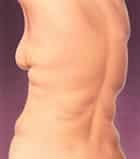
Healthy, normal-weight people with elastic skin and pockets of excess fat are good candidates for surgery.
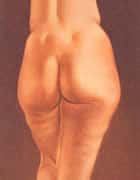
The best candidates for liposuction are of normal weight with localized areas of excess fat– for example, in the buttocks, hips, and thighs.
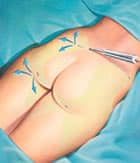
The surgeon inserts a cannula through small incisions in the skin. At the other end of the tube is a vacuum-pressure unit that suctions off the fat.
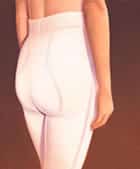
A snug compression garment worn after surgery helps reduce swelling.
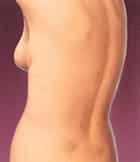
Improvement will become apparent after about six weeks, when most of the swelling has subsided.

As healing progresses, a more proportional look will emerge.

A slimmer body contour can help you feel more confident and comfortable.